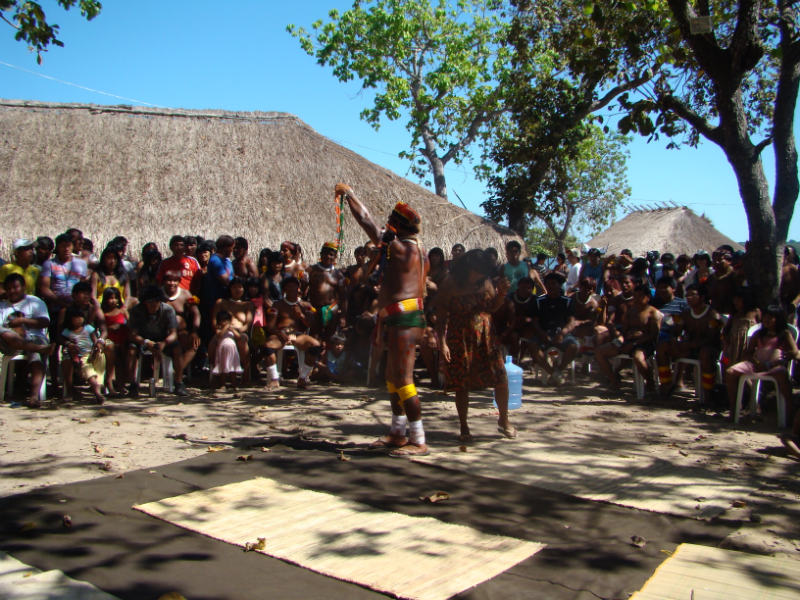The Mehinako, Mehinaku, Mehináku, or Meinacos are members of an indigenous group located in the region around the headwaters of the Xingu River in Brazil. They speak an Arawakan language[1] and currently reside in area around the Tuatuari and Kurisevo rivers. They have a population of 259 (in 2010).
In 1884, when the first German explorers arrived at the Xingu River headwaters and began to document the tribes living there, the Mehinako had two villages and a camping site used only during the dry season. Many anthropologists believe that, at the time, the population of the region may have been more than four times what it is today, and that the villages were likely much larger.
The Mehinako have no provision for privacy in their social arrangements, and live with a striking degree of transparency. Huts that house families of ten or twelve people have no internal walls, and are situated around an open area that is in constant view. On the rare occasions when members of the group are out of sight, their activities can be inferred by their curious fellow villagers, who are able to recognize (and draw from memory) each other’s footprints. Gregor sums up the situation by writing: “Each individual’s whereabouts and activities are generally known to his relatives and often to the community as a whole. A Mehinaku has little chance of staying out of the public eye for any length of time.”
Text adapted from Wikipedia’s article on the Mehinako Peoples


